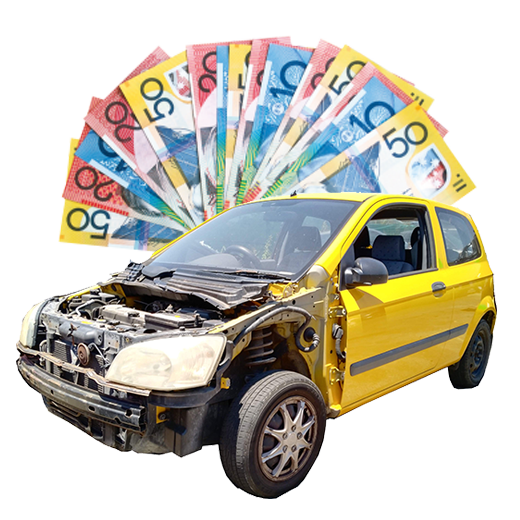That old car sitting in your driveway isn't just taking up space—it's a collection of valuable, recyclable components that can put cash right back in your pocket. Opting for auto parts recycling is not only a smart financial move but also a massive win for environmental sustainability here in Australia. Let's break down how you can see that old vehicle not as junk, but as a genuine resource.
The Untapped Value in Your End-of-Life Vehicle
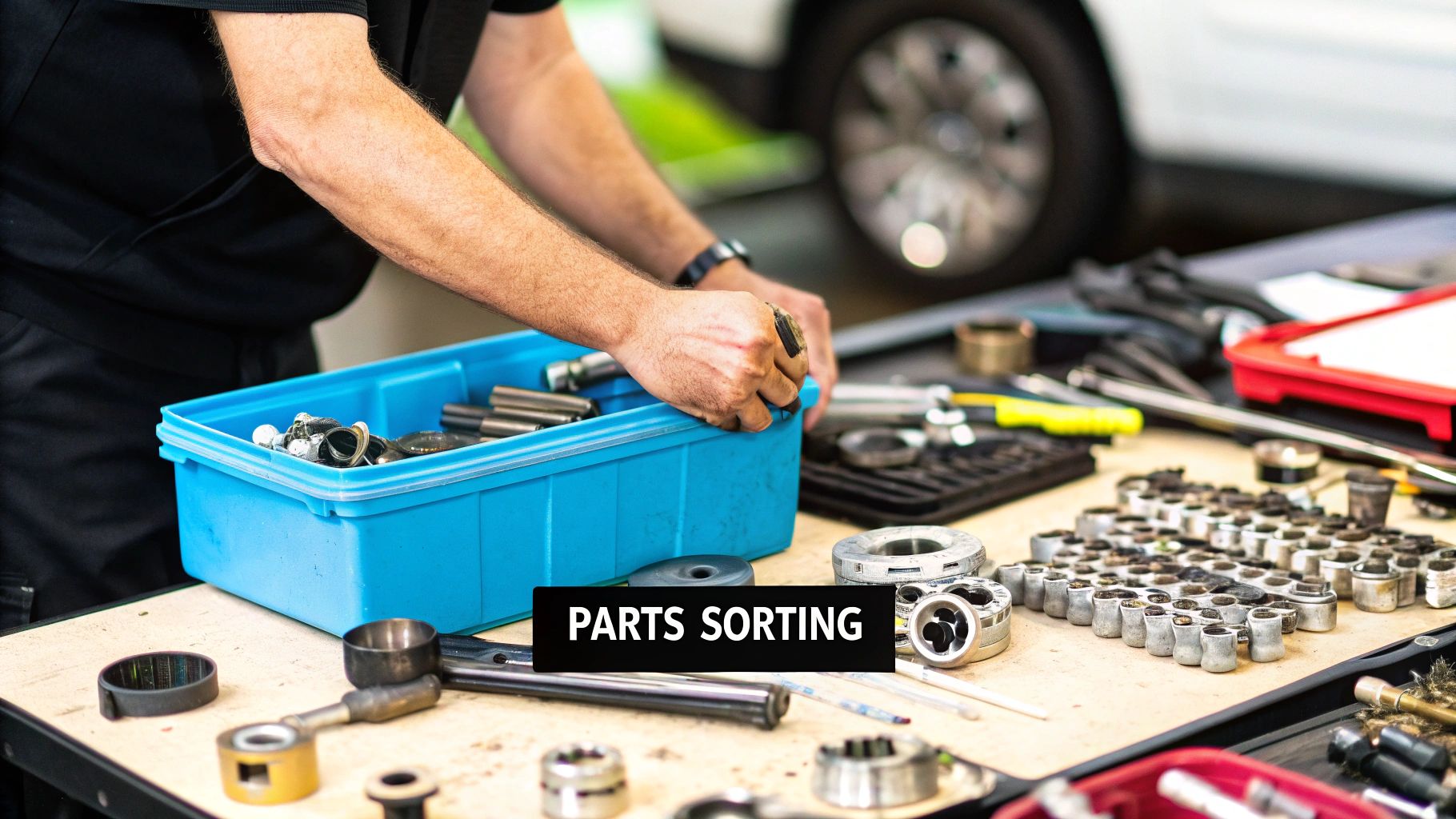
It’s easy to see a non-running car as a burden. You look past the faded paint and flat tyres and just see a problem that needs solving. But what we see is potential. Inside that shell, there’s an engine, transmission, alternator, catalytic converter, and dozens of other components that still have real, tangible value.
When you work with a professional service like Auto Removal Adelaide, you’re not just scrapping metal. You're ensuring every viable part gets a second life, plugging directly into a circular economy that keeps resources in use and benefits everyone involved.
Financial and Environmental Gains
Let's talk dollars first. The most obvious benefit is turning a dead-weight vehicle into instant cash. Instead of potentially paying someone to tow it away, you get paid on the spot. It’s a simple switch from a liability to an asset.
The bigger picture is even more impressive. Recent research from eBay Australia found that local drivers could save an average of $2,144 over five years simply by using recycled parts instead of buying new. Across the country, that adds up to a potential saving of $15.5 billion. This just goes to show how vital a strong auto recycling industry is for the national economy.
On the environmental front, the impact is huge. Think about the energy and raw materials needed to manufacture a brand-new car part. It's an intensive process that leaves a heavy carbon footprint. Recycling completely sidesteps a huge chunk of that.
By recycling just one car, we can conserve roughly 1,100 kilograms of iron, 500 kilograms of steel, and 120 kilograms of non-ferrous metals. That's material that doesn't need to be mined and processed from scratch.
This directly reduces landfill, stops hazardous fluids from seeping into our soil, and significantly lowers the automotive industry's overall environmental impact.
How the Process Works
So, how do you turn your old car into cash and recycled parts? We've made the process as simple and transparent as possible.
Here’s what you can expect:
- Get a Quick Quote: First, you’ll give us the basic details of your car—its make, model, year, and a quick rundown of its condition. We’ll give you an initial valuation based on that.
- Book a Free Pickup: We’ll schedule a time that works for you, and our team will come to your location for a completely free vehicle removal. No fuss, no hidden fees.
- Get Paid Instantly: Once our team arrives and gives the car a quick look-over to confirm the details, you get paid in cash, right then and there.
- Leave the Rest to Us: From there, your vehicle is taken to our facility. Our experts in auto parts recycling get to work, carefully dismantling it, salvaging everything reusable, and making sure all hazardous fluids are disposed of safely and responsibly.
It’s a streamlined way to do something great for your wallet and the planet without any of the hassle.
Getting Your Car Ready for a Top-Dollar Offer
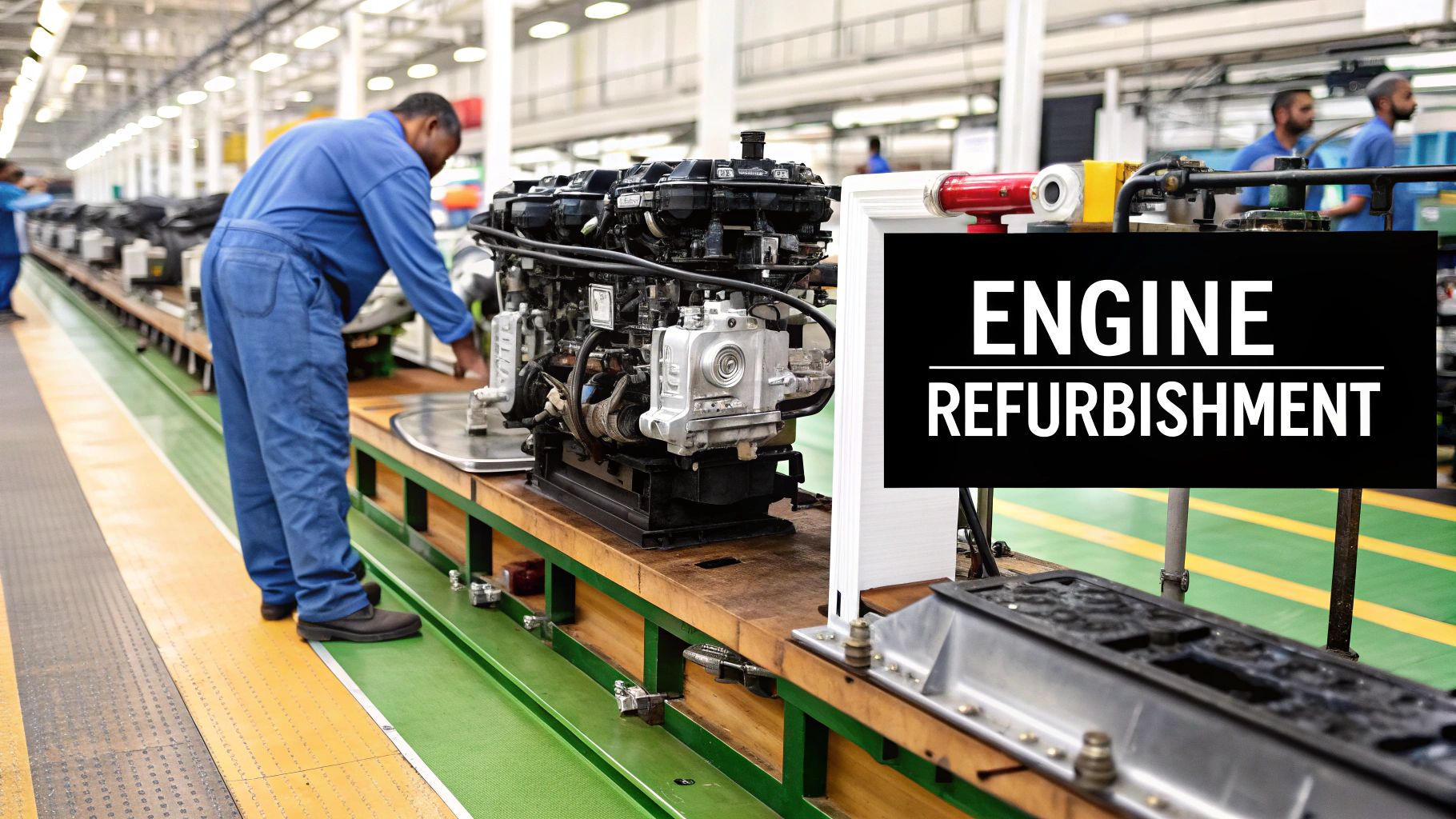
Getting the most cash for your old car isn’t just about its condition; it’s also about a little prep work before our tow truck swings by. Think of it less as a major project and more as getting your affairs in order. A few simple steps can make the whole process smoother and put more money in your pocket.
Taking a bit of time to prepare the vehicle helps our team assess its value quickly and accurately. This isn't about making repairs—it's about presenting a clean slate, which helps us give you our best possible offer for recycling auto parts.
Clear Out Your Personal Stuff
First up, it’s time for a thorough clean-out. Go through your car one last time and check everywhere—the glove box, under the seats, in the boot, and any hidden compartments. It's amazing what we find tucked away over the years, from old sunnies to important documents.
Once the car is gone, it's pretty much impossible to get those forgotten items back. Making sure it’s completely empty of your personal belongings just prevents any headaches or regrets down the line.
Get Your Paperwork in Order
Having the right documents ready is a must. For us to legally purchase and recycle your vehicle, we need to confirm you're the rightful owner. It’s a simple but crucial part of the process.
Here’s what you’ll need to have handy:
- Proof of Ownership: This is your vehicle’s title or registration papers. It’s the official document that proves the car is yours.
- A Valid Photo ID: Your driver’s licence or another government-issued photo ID is perfect for verifying your identity.
Having these documents ready to go means we can wrap up the sale and get you paid on the spot, without any annoying delays.
A Word of Warning: Don't Remove Parts Yourself
We get it. It’s tempting to pull out that fancy stereo or a set of nearly new tyres to sell on the side. But trust us on this one—it almost always backfires and ends up lowering your cash offer. We value cars as complete units, not a collection of leftovers.
When our assessors look at a vehicle, they're calculating the value of the whole package. A car with all its major bits and pieces intact is worth far more to us. When you start stripping parts, it makes it much harder to determine its full recycling potential and reduces the overall value.
Honestly, the biggest mistake we see people make is yanking parts before calling for a quote. A car without its engine, transmission, or catalytic converter is basically just a shell, and its value plummets to scrap metal weight. The cash you get for those parts as part of the car is almost always higher than what you'd get selling them yourself.
Let’s break down why leaving the key components in place is so important for your payout.
The Three Components We Value Most
- Engine and Transmission: These are the heart and soul of any vehicle. As the most valuable parts for potential rebuilding or resale, their presence is a huge factor in our offer. A car without its core powertrain is a completely different proposition.
- Catalytic Converter: This is a goldmine for recyclers. Packed with precious metals like platinum and palladium, the "cat" is one of the most sought-after items in the recycling auto parts industry.
- Battery and Tyres: They might seem small, but decent tyres and a working battery absolutely contribute to the car's overall value. We assess everything, and leaving these parts on helps bump up the final price.
By letting our professional team handle the dismantling, you ensure every single valuable component is factored into your quote. We’re experts at extracting the maximum value from every vehicle, which means a bigger cash payment for you.
What Determines Your Car's Recycling Value?
Ever wondered what really goes into the cash offer for your old car? It’s not just a number pulled out of thin air. When we value a vehicle, we're doing a careful calculation based on a mix of factors, from the basic details of your car to the current market demand for its parts. Understanding these elements helps demystify our offer and shows you where the true value lies.
Of course, the make, model, year, and overall condition are the starting points. A newer model with less damage will naturally have more salvageable components than a rust-bucket that’s been sitting in a paddock for a decade. But the real story is often found under the bonnet, in the specific, high-demand parts that can be refurbished and resold.
The Most Valuable Auto Parts For Recycling
While we value every vehicle as a whole, certain parts are the heavy hitters that can seriously boost your cash offer. These are the components that mechanics and car enthusiasts are actively searching for, making them prime candidates for the recycling auto parts market.
What are we looking for?
- Engines and Transmissions: These are the heart and soul of the powertrain. Functional or rebuildable engines and transmissions are highly sought after because they're the most complex and expensive parts to replace new. A good-quality used one is a popular, cost-effective fix.
- Catalytic Converters: Often the unsung hero of your car's value, the "cat" contains precious metals like platinum, palladium, and rhodium. These metals are incredibly valuable, so they can be extracted and reused, making this one part a major contributor to your car's final price.
- Alternators and Starter Motors: These essential electrical components are built to last but frequently fail in older cars. A working, salvageable alternator or starter motor from your vehicle can easily be refurbished and put back into circulation, meeting constant demand.
To give you a clearer picture, some parts just fetch a higher price than others. The condition is always a major factor, but the inherent demand and complexity of the component play a huge role.
High-Value vs Standard-Value Recyclable Components
| Component Category | Examples | Typical Value Driver | Condition Impact |
|---|---|---|---|
| Powertrain | Engine, Transmission, Differential | High complexity, high replacement cost | High (must be functional or rebuildable) |
| Exhaust System | Catalytic Converter, Muffler | Precious metal content (platinum, rhodium) | Moderate (value is in materials) |
| Electrical System | Alternator, Starter Motor, ECU | High demand for common failure parts | High (must be in working order) |
| Body Panels | Doors, Bonnets, Guards | Cosmetic appeal, low-damage availability | Very High (must be dent/rust-free) |
| Interior Parts | Seats, Dashboard, Centre Console | Rarity, specific model demand | High (must be clean, no rips or cracks) |
| Wheels & Tyres | Alloy Rims, Good-Tread Tyres | Brand, size, and condition of rims/tyres | High (must be undamaged with legal tread) |
As you can see, a car with a good engine and intact catalytic converter will almost always be worth more than a car that's just a shell, even if the shell is in good condition.
This infographic really drives home the benefits of using recycled parts over new ones, not just for your wallet but for the planet.
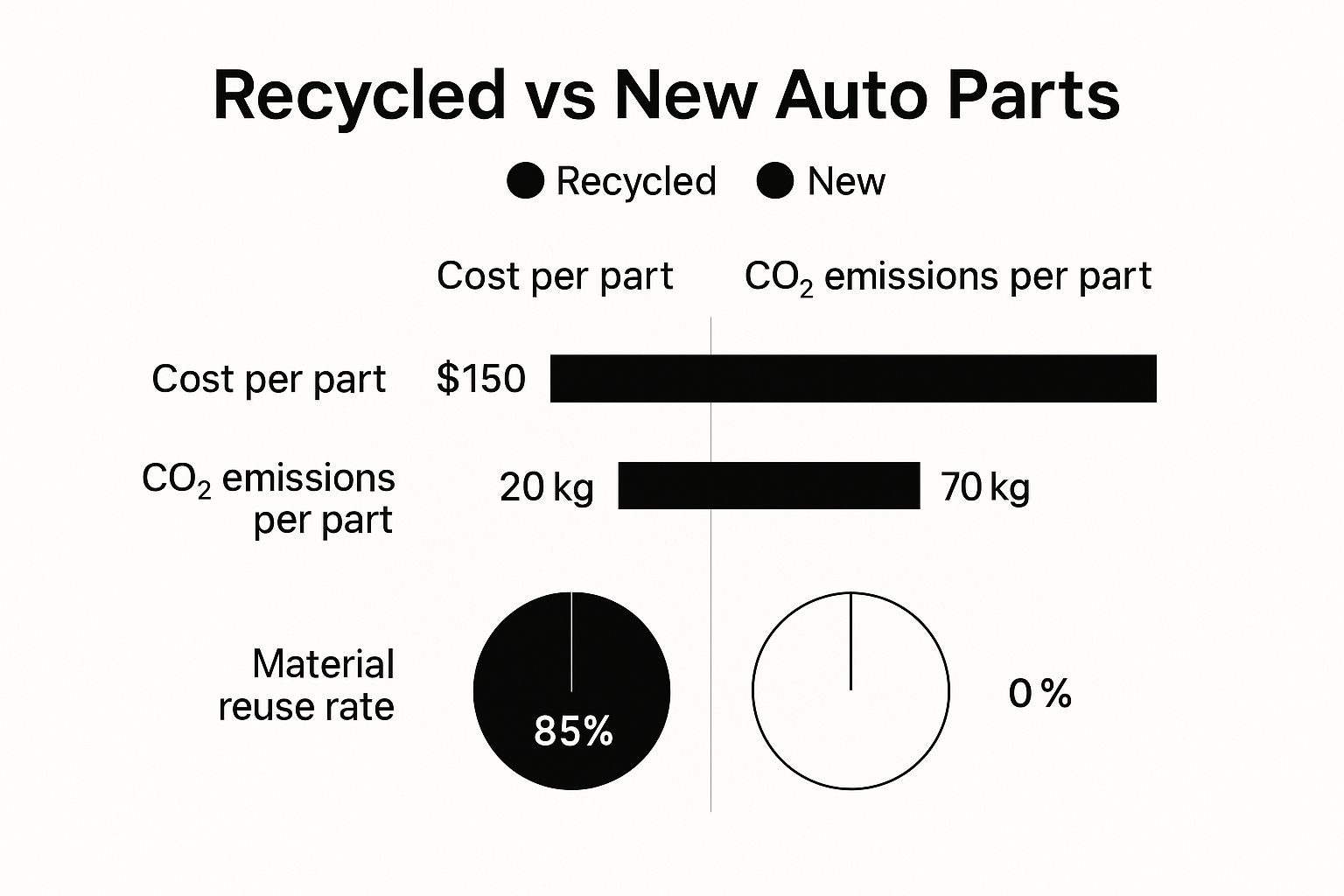
Choosing a recycled part doesn't just save you hundreds of dollars. It also drastically cuts down carbon emissions and keeps valuable materials in use, which is a win for everyone.
The Influence of Scrap Metal Prices
Beyond the individual parts, the global market for scrap metal plays a big part in your car’s valuation. A huge chunk of any vehicle’s weight is its steel, aluminium, and copper content. The prices for these commodities fluctuate daily based on supply and demand, a bit like the stock market.
When scrap metal prices are high, the base value of every car we assess goes up, which means a better offer for you. This is why a quote you get today might be slightly different from one you’d get next month. We always base our offers on the most current market rates to make sure you’re getting a fair, transparent price.
It's a common misconception that a car's value is solely tied to its weight in scrap. While weight is a factor, the real value lies in the sum of its parts. A lighter car with a high-demand engine can easily be worth more than a heavier, older vehicle with few salvageable components.
Getting a precise valuation can be tricky on your own, which is why we've built tools to help. For a quick and accurate estimate tailored to your vehicle, you can use our simple junk car value calculator: https://autoremovaladelaide.com.au/junk-car-value-calculator/
Special Considerations For Different Vehicle Types
The type of vehicle you have also makes a difference. For example, commercial vans and utes are often built with heavy-duty components designed for a hard life, making their parts particularly valuable. Their larger size and weight also mean they have a higher scrap metal value right off the bat.
Electric vehicles (EVs) and hybrids are a different kettle of fish. Their large battery packs contain valuable materials like lithium and cobalt, but they also require specialised handling procedures for safe dismantling. When we look at EVs, factors like the battery's health and the risks involved in handling it, like fire hazards, will influence the recycling value. It’s a specialised field, and you can learn more by understanding EV battery fire safety from expert resources.
Ultimately, our valuation is a comprehensive assessment. We look at your car from every angle—from its basic stats to the condition of its most valuable parts and the current scrap market—to build the best possible cash offer.
The Environmental Impact of Your Decision
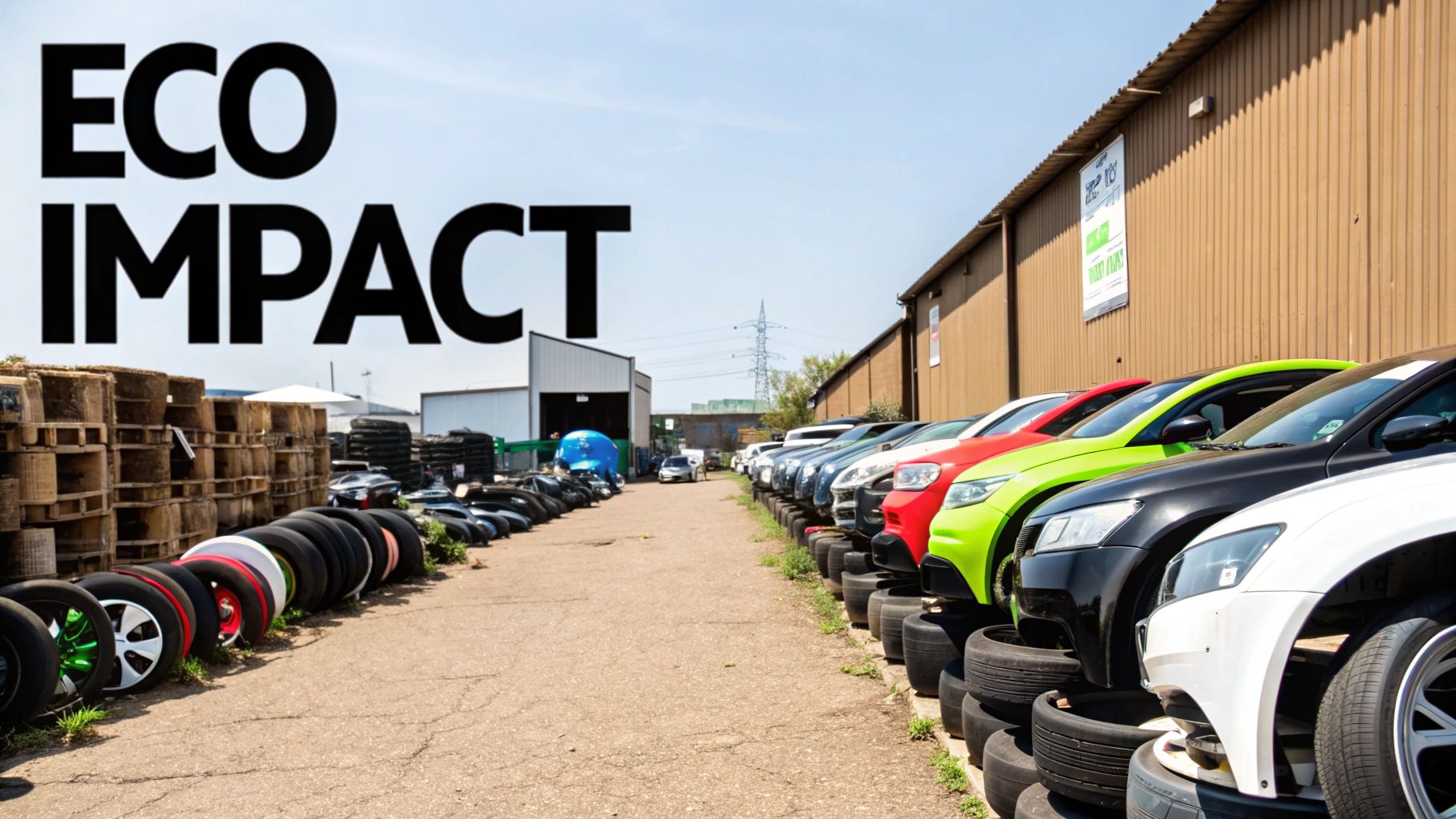
Sure, getting a handful of cash for your old car is a great feeling, but the choice to recycle it goes much deeper than that. When you decide on recycling auto parts, you're making a genuinely positive mark on the environment. It’s a decision that helps conserve our natural resources, cuts back on energy use, and builds a healthier planet for all of us.
Handing your old vehicle over to a professional recycler isn't just about freeing up space on your property. You're actually preventing a huge object packed with metals, plastics, and harmful fluids from being dumped in a landfill.
Conserving Natural Resources and Energy
Making new car parts from virgin materials is a tough, dirty business. It involves mining for ore, shipping it across the country (or the world), and then smelting it down—all of which uses a staggering amount of energy and water, leaving a massive carbon footprint.
Car recycling completely changes the game. By recovering the materials we already have, we sidestep the need for most of that destructive extraction process.
Just think about what’s in your car:
- Steel and Iron: Reusing the steel from just one car saves over 1,100 kilograms of iron ore and 635 kilograms of coal. On top of that, it takes about 74% less energy to recycle steel than to make it from scratch.
- Aluminium: The savings with aluminium are even more incredible. Recycling it uses up to 95% less energy compared to producing it from bauxite ore. That's a huge win for reducing greenhouse gas emissions.
Your old car is essentially a mobile resource bank. By recycling it, you're putting those valuable materials right back into the system, minus the heavy environmental toll of starting from square one.
When you choose to recycle, you’re not just offloading a vehicle. You're taking part in one of the most effective ways to conserve resources. You're ensuring the materials in your car keep moving through a more sustainable, circular economy here in Australia.
Reducing Landfill and Preventing Pollution
The sheer volume of automotive waste in Australia is hard to fathom. We see around 850,000 vehicles hit the end of the road each year, creating about 1.36 million tonnes of waste. While the industry does a decent job of recovery, far too much still risks ending up as landfill, a problem detailed in this report on Australian car recycling.
A car left to rot in a field or dump is a ticking time bomb for the environment. Engine oil, antifreeze, and battery acid will eventually leak out, poisoning the soil and seeping into our groundwater. Working with a professional auto recycler guarantees these hazardous fluids are drained and handled correctly, following strict safety protocols.
Supporting Australia's Circular Economy
Every time a component is salvaged, cleaned up, and put back on the market, it keeps a perfectly good part doing its job. This reduces the demand for brand-new manufacturing and gives other car owners an affordable, greener option for repairs. This is what recycling auto parts is all about—the circular economy in action.
Your decision helps support a whole chain of local Aussie businesses, from the dismantlers and mechanics to the metal processors, all working together to get the most out of what we already have. It's a smart move for your bank account, a responsible one for the community, and a crucial step towards a greener future for Australia. You’re doing a lot more than just selling an old car; you're making a real difference.
Sorting Out the Paperwork and Legalities
When you sell a car for recycling, it’s not quite as simple as a handshake and handing over the keys. There are a few legal hoops to jump through, but they’re there to protect you. Getting the paperwork right is how you officially transfer ownership, making sure you’re no longer responsible for the vehicle once it’s gone. It's an essential step for a smooth, worry-free sale.
Think about it this way: until the government knows you've sold the car, you're still legally its owner. A bit of simple admin work is all it takes to shield yourself from any potential fines or issues that might pop up after the car leaves your driveway.
How to Finalise the Sale Properly
The single most important document is the Notice of Disposal (NOD). Here in South Australia, you need to lodge this with the Department for Infrastructure and Transport. It’s your official declaration that the car is no longer yours, and it’s what takes the registration out of your name for good.
Don't skip this. It's what frees you from any future parking fines, toll charges, or legal dramas connected to that vehicle. A good, reputable car removal company will remind you about this, but ultimately, it's your responsibility as the seller to get it done.
A verbal agreement just won't cut it in the eyes of the law. Lodging that Notice of Disposal is the only way to officially sever your ties to the vehicle and give you total peace of mind.
You should also always get a formal receipt or proof of sale from the auto removal company. This isn't just a suggestion; it's crucial. Make sure the receipt clearly shows:
- The exact date and time of the sale.
- The final cash price you agreed on.
- Your car’s details (make, model, VIN, and registration number).
- The buyer's full business name and details.
This piece of paper is your personal record of the deal, proving who you sold the vehicle to and when. For a deeper dive into the handover process, check out our guide on the disposal of cars.
Why This Keeps Everyone Covered
Following these legal steps creates a clear paper trail that protects both you and the buyer. For you, it’s all about removing liability. For the recycler, it confirms they own the car legally, which allows them to dismantle and process it without any issues.
This responsible approach benefits the entire recycling auto parts industry. Take plastics, for example. The careful recycling of plastic components from cars is a big deal. Australia's plastic recycling market was valued at around USD 1.21 billion and is only expected to grow, thanks to national efforts to improve recycling here at home. When you transfer ownership correctly, you ensure every part of your old car—plastics included—enters the legitimate recycling system. You can read more about the growth of Australia's plastic recycling market at imarcgroup.com.
By taking care of these simple legal tasks, you’re doing more than just selling a car. You're closing the chapter properly, protecting yourself, and making sure your old vehicle makes a positive contribution to the circular economy.
Got Questions About Recycling Your Car Parts? You're Not Alone.
Even with a straightforward plan, deciding to sell an old car for parts is a big step. It’s completely normal to have a few lingering questions. To make sure you’re comfortable with the whole process, we’ve tackled some of the most common queries we get from car owners right here in Adelaide.
Think of this as your final check-in before turning that old vehicle into cash. We'll clear up everything from how much money you can expect to what actually happens after we tow your car away.
How Much Cash Can I Realistically Get For My Old Car?
This is always the big question, and the honest answer is: it really depends. The final cash offer is a mix of a few key things: the make, model, age, and, most importantly, the condition of your car. As a general rule, heavier vehicles like utes, vans, and big 4x4s often have a higher starting price because they contain more scrap metal by weight.
But the real kicker for a top-dollar offer isn't just the size—it's what's still working under the bonnet. The value skyrockets if there are functional, in-demand parts we can salvage.
A car with a solid engine and transmission, or an intact catalytic converter, is worth a lot more than just a metal shell. These are the components that get a second life, forming the backbone of the used auto parts market.
Of course, the daily market prices for scrap metals like steel and aluminium play a part, as they shift with global supply and demand. Any good auto removal service will give you a transparent quote that breaks down how they landed on their number. You could be looking at anything from a couple of hundred dollars for a basic clunker to well over a thousand for a vehicle that’s a goldmine of reusable parts.
What Actually Happens To My Car After You Take It?
Once our truck pulls away with your car, it’s not just heading to a crusher. It’s starting a highly organised, environmentally-focused recycling process designed to recover as much material as possible.
Here's a quick look at its journey:
- First, Depollution: Before anything else, we drain all the hazardous fluids. That means the engine oil, coolant, brake fluid, and any petrol left in the tank. These are all handled and disposed of under strict environmental guidelines to prevent any contamination.
- Salvage and Dismantling: Next, our technicians give the vehicle a thorough inspection to see what can be saved. Good-condition parts—alternators, starter motors, doors, even seats and mirrors—are carefully removed, cleaned up, tested, and catalogued for resale.
- Stripping the Shell: With the valuable parts out, the car's frame is stripped of everything else: wiring, plastics, carpets, and fabrics. These materials are all sorted and sent off for their own recycling processes.
- The Final Squeeze: Finally, the bare metal shell is crushed, shredded, and then sorted by metal type using massive magnets and advanced sensors. This high-quality recycled metal is sold to foundries and smelters, ready to be melted down and used in new manufacturing. The loop is officially closed.
This careful, step-by-step method ensures that up to 95% of every vehicle is recycled or reused, which keeps a massive amount of waste out of our South Australian landfills.
Do I Need To Be There For The Pickup?
We get it, life is busy. While it’s usually easiest if you’re there to sign the final papers and get your cash in hand, it’s definitely not a deal-breaker. We, like most professional auto removal services, are flexible and can work around your schedule.
The most important thing is clear communication. If you can’t be there, we can often sort out the paperwork beforehand and arrange an electronic bank transfer for payment. All you need to do is make sure our driver has safe and legal access to the vehicle at the agreed-upon time. It’s all about making the process work for you, not the other way around.
Is My Car Too Old Or Wrecked To Be Worth Anything?
We hear this worry all the time, and the answer is almost always a firm no. Even if your car has been in a major prang or hasn't started in a decade, it still has value. The source of that value might shift from its reusable parts to its sheer weight in scrap metal, but it’s never worthless.
Don't forget, every car is packed with recyclable materials. The steel in the body, the aluminium in the engine, the copper in the wiring looms, and the precious metals inside the catalytic converter all have a price tag. Our entire business is built on extracting that value, no matter what the car looks like. Before you write it off as junk, let us give you a free quote. You might just be pleasantly surprised.
Ready to turn that old car into instant cash? Auto Removal Adelaide makes the process simple, transparent, and profitable for you. Get a free, no-obligation quote today and discover the real value hidden in your driveway. Visit us at https://autoremovaladelaide.com.au to get started.

